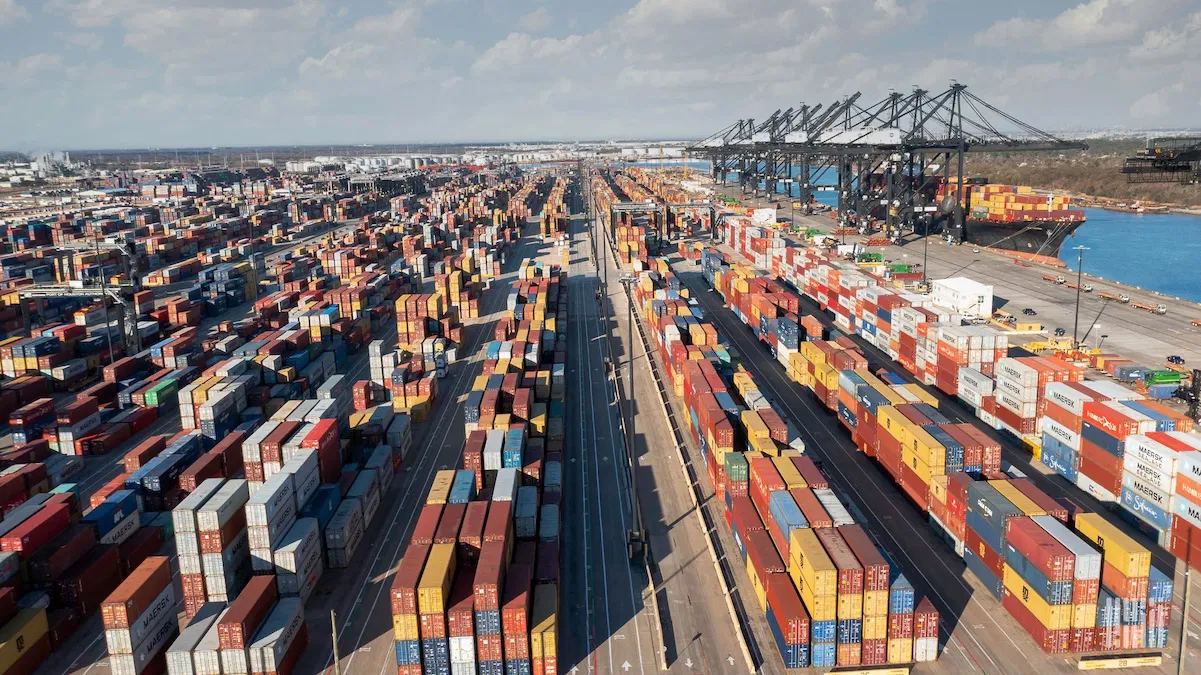Súčasná situácia v oblasti transpacifických kontajnerových sadzieb
Transpacifické sadzby za kontajnerovú prepravu zaznamenávajú klesajúcu tendenciu, čo je znepokojujúce pre odvetvia lodnej dopravy a logistiky na celom svete. Pochopenie týchto výkyvov môže poskytnúť cenné informácie o tom, ako môžu ovplyvniť logistiku a riadenie nákladnej dopravy.
Kľúčové poznatky a postrehy
- Okamžité sadzby pre námorné kontajnery prepravované z Ďalekého východu do USA zaznamenávajú pokles, hoci tempo tohto poklesu sa v auguste spomalilo v dôsledku riadenia kapacity lodnými dopravcami.
- Realizácia prázdnych plavieb, keď sú lode vyradené z prevádzky, viedla k nahromadeniu nákladu v rôznych prístavoch v Číne, pretože prepravcovia využívajú tieto oblasti na skladovanie vzhľadom na obmedzenú kapacitu plavidiel.
- Zatiaľ čo spotové sadzby z Ďalekého východu do severnej Európy sa po predchádzajúcom zvýšení stabilizovali, sadzby do Stredozemného mora zaznamenali pokles.
- Prekapacita v globálnom kontajnerovom lodnom parku spojená s miernym prognózovaným dopytom naznačuje, že tlak na znižovanie spotových sadzieb pravdepodobne pretrvá.
Trendy okamžitých kurzov: Hlboký ponor
Aktuálne spotové sadzby pre referenčnú trasu z Ďalekého východu na západné pobrežie USA zmiernili svoj počiatočný prudký pokles, ktorý od júna predstavoval ohromujúce zníženie o 53 %. Čísla sú teraz približne 2 098 USD za štyridsaťstopový ekvivalent (FEU) pre západné pobrežie, čo predstavuje pokles o 3 % od konca júla. Sadzby na východné pobrežie sú okolo 3 311 USD, čo naznačuje 9 % pokles za rovnaké obdobie.
ID, ak vás to zaujíma – tieto poklesy pramenia z ohromujúcich poklesov o 62% na západné pobrežie a 53% na východné pobrežie od začiatku júna. Ako situácia stojí, priemerný pokles o ďalších 9% už zasiahol sadzby na západnom pobreží od konca júla, čím ich znížil na $2 015 za FEU.
Odpovede operátorov
Podľa hlavného analytika spoločnosti Xeneta prepravné spoločnosti dôrazne riadia svoje kapacity, predovšetkým prostredníctvom zvýšeného počtu zrušených plavieb. Tento pomer sa od polovice júna takmer zdvojnásobil, s cieľom obmedziť prudký pokles priemerných spotových sadzieb na transpacifickej trase. Hoci účinnosť týchto opatrení viedla k spomaleniu drastického poklesu spotových sadzieb, ktorý bol pozorovaný začiatkom leta, zdá sa, že dynamika je obmedzená a nedostatočná na to, aby zastavila celkový klesajúci trend v nasledujúcich mesiacoch.
Metriky výkonnosti pri nevyužitých plavbách
Objem zrušených plavieb výrazne vzrástol z týždenného priemeru 30 000 TEU hláseného koncom júna na približne 57 000 TEU začiatkom augusta.
| Obdobie | TEU Zrušené Týždenne |
|---|---|
| 22. jún | 30 000 |
| August 1 | 57 000 |
Preťaženie prístavov a jeho dôsledky
Reťazová reakcia zrušených plavieb sa nezastavila len pri kolísajúcich sa sadzbách; poskytovatelia logistických služieb poukázali na vážne problémy s preťažením, ktoré vznikajú v niektorých z najrušnejších čínskych kontajnerových prístavov. Keďže naložené kontajnery uviazli na dokoch, prepravcovia efektívne využívajú prístavy ako improvizované sklady pri hľadaní dostupnej kapacity plavidiel.
Trendy v iných smeroch
Pre tých, ktorí majú záujem o európske trasy, priemerné spotové sadzby z Ďalekého východu do severnej Európy sa v súčasnosti pohybujú okolo 3 330 USD za FEU, zatiaľ čo sadzby do Stredozemného mora sú o niečo vyššie, a to 3 372 USD za FEU. Je potrebné poznamenať, že sadzby z Ďalekého východu do severnej Európy sa po prudkom náraste ustálili, pričom medzi koncom mája a začiatkom júla vzrástli o 78 %, ale odvtedy klesli o 21 %. Sadzby do Stredozemného mora tiež klesli o 7 % od konca júla a približne o 26 % od polovice júna, čo celkovo predstavuje ťažkú jazdu.
Pozorovania trhu
Napriek obavám týkajúcim sa výkyvov dopytu, pozorovatelia poznamenali, že čínsky objem exportu do Európy zostal silný, čo naznačuje, že úpravy cien môžu prameniť z hlbších trhových stratégií, vrátane potenciálnych drastických zliav ponúkaných s cieľom udržať továrne v prevádzke uprostred prevládajúcich ekonomických podmienok.
Záver: Budúce dôsledky pre logistiku
Pokračujúce znižovanie sadzieb kontajnerovej prepravy cez Tichý oceán signalizuje významné zmeny pre logistiku a prepravné operácie. Každý kanoista vie, že ak chcete dosiahnuť svoj cieľ, musíte veslovať proti prúdu, a vo svete, kde hrozí nadmerná kapacita, musia poskytovatelia logistiky múdro navigovať. Hoci sa tieto trendy nemusia zdať alarmujúce v globálnom meradle, majú význam pre logistické firmy ako GetTransport.com, ktoré sa snažia poskytovať včasné a nákladovo efektívne prepravné riešenia a zároveň sa prispôsobovať meniacim sa trhovým podmienkam.
S riešeniami šitými na mieru pre sťahovanie domácností aj kancelárií, spolu s doručovaním nákladov zahŕňajúcich rozsiahle položky, ako je nábytok a vozidlá, GetTransport.com zjednodušuje logistiku a efektívne spĺňa rôznorodé potreby v oblasti prepravy. Pamätajte, že ani tie najlepšie recenzie a najtransparentnejšie hodnotenia sa nemôžu skutočne vyrovnať osobnej skúsenosti so službou. S GetTransport.com je preprava vášho nákladu globálne za prijateľnú cenu vzdialená len na jedno kliknutie. Zarezervujte si prepravu s GetTransport.com hneď!

 Analýza klesajúcich trendov v transpacifických kontajnerových sadzbách">
Analýza klesajúcich trendov v transpacifických kontajnerových sadzbách">